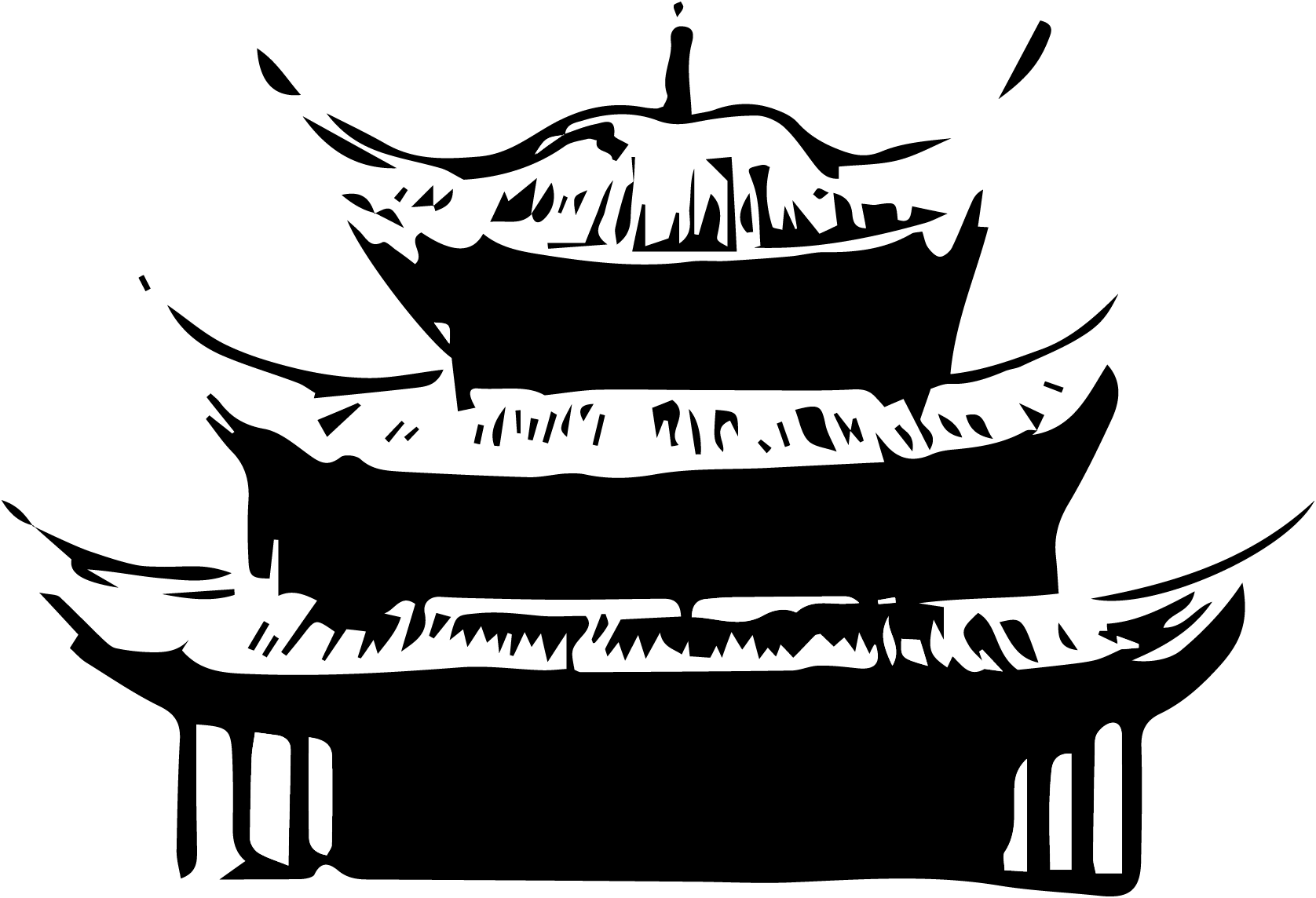Architecture on the Road
HUI ARCHITECTURE AND VILLAGES - VERNACULAR ARCHITECTURE IN SOUTH ANHUI
Anhui Province, located in the central part of China, is internationally renowned for its Yellow Mountains, one of the most majestic natural wonders in all of Asia.
The region called “Huizhou” is home to several ancient architectural jewels, which includes the picturesque villages of Xidi and Hongcun, UNESCO World Heritage Sites. Each year these villages attract hundreds of thousands of visitors from all over the world.
The traditional architecture of southern Anhui has been well preserved in many of the villages scattered about the verdant countryside around the city of Tunxi (also known as Huangshan, Huang = yellow, Shan = mountain). The vernacular architecture of these villages has survived well since their construction during the Ming and Qing dynasties. In large part, they have managed to keep their architectural quality and lifestyle intact through the centuries.

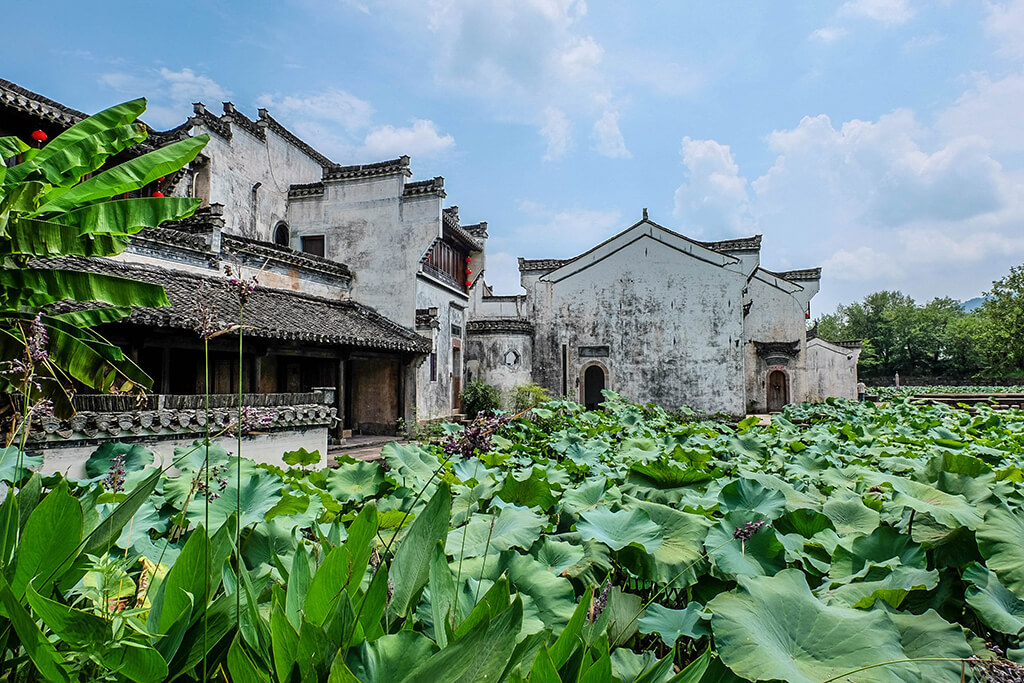
DISCOVERING HUI ARCHITECTURE
In line with the main Chinese architectural typology, the main feature of Hui typology is the court. However, in this region there are several important variations from the typical courtyard houses of other parts of China. Hui houses are built around one or more courtyards depending on the social importance of the family.
The white perimeter walls that enclose the houses are usually higher than the buildings within. Their function is not only decorative, but also practical. These heightened walls can prevent the spread of fires between buildings in the village, protect the interiors from strong gusts of wind, and hinder thieves.
The upper profile of the walls has a stepped gait; the peculiar shape earning the name “horse-head walls.” According to local culture, this shape is intended to resemble the head of a horse.
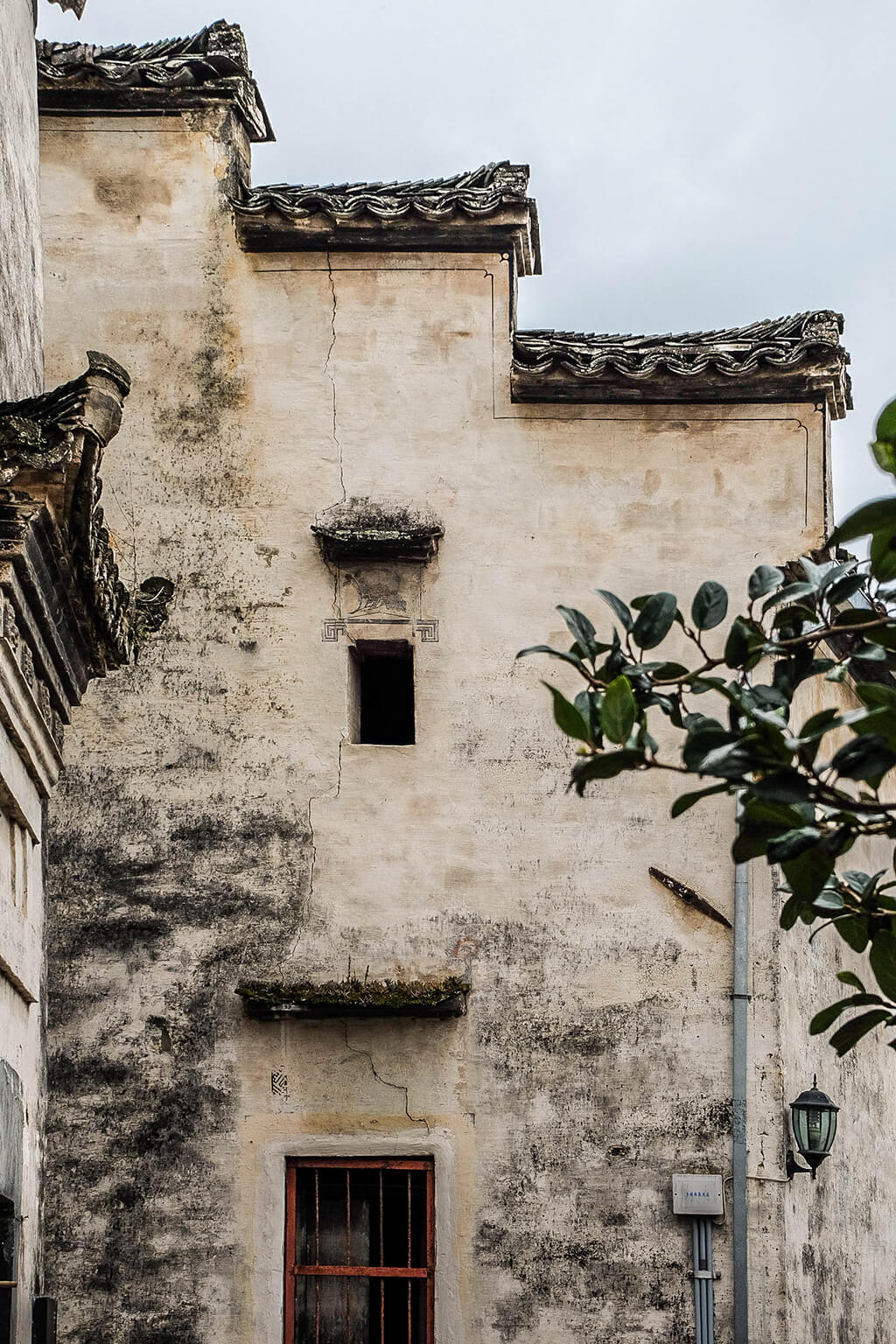
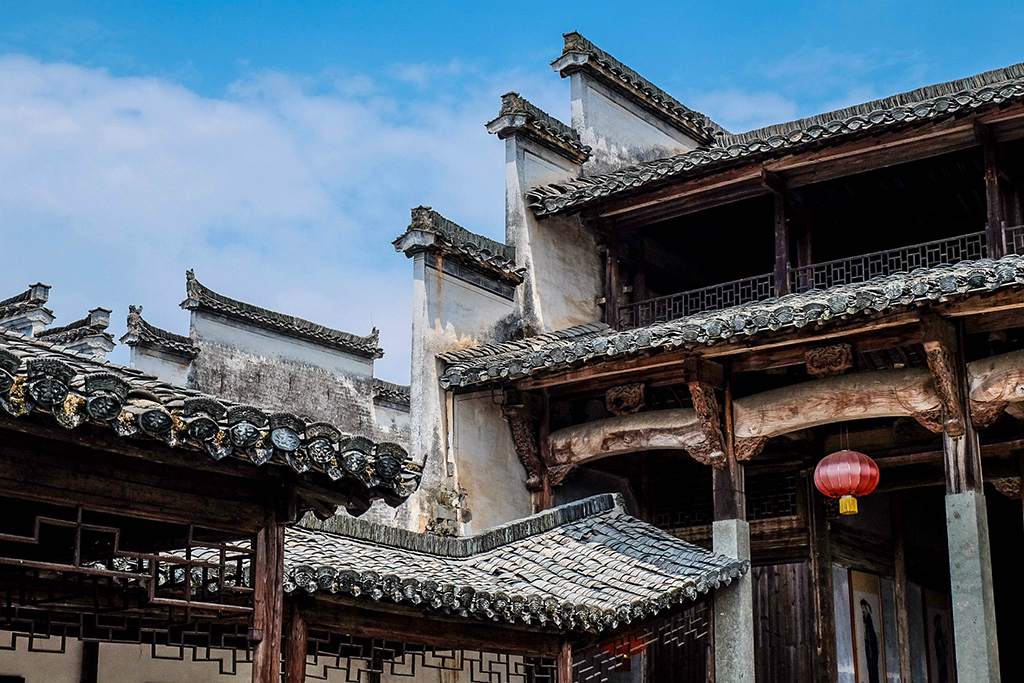
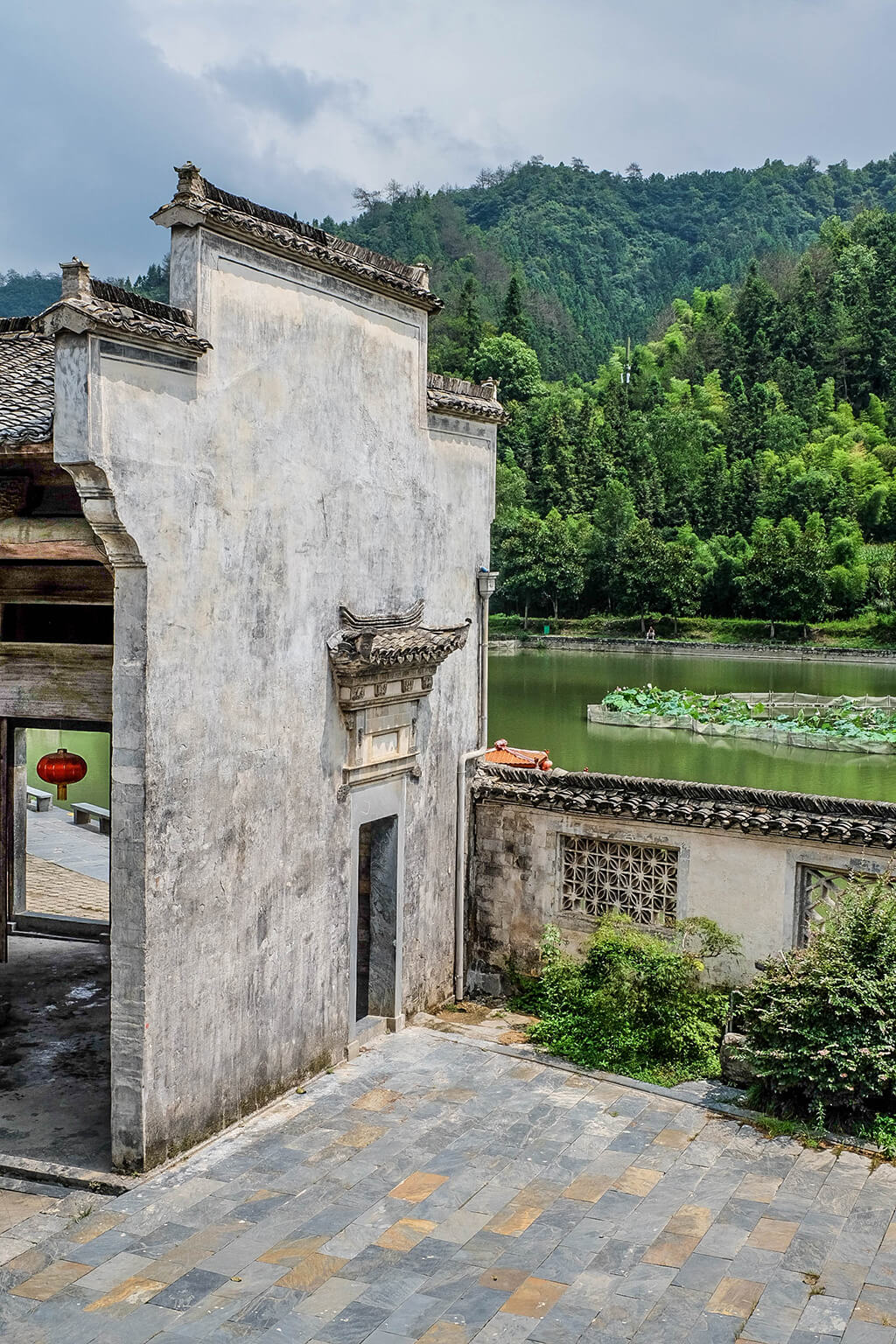
The houses are two to three floors and surround a central courtyard. These ‘courtyards’, which are actually more of an interior space with a hole in the roof, provide natural light and ventilation. The climate of the area is very wet so the opening in the roof is of limited size, but allows the interior space to remain cool and shady even in the middle of summer.

The interiors of the houses are solid, intricately carved structures.
As mentioned before, the size and structure of the houses are determined by the social status of the family. The inhabitants, even the extremely wealthy ones, could not build larger or more sumptuous houses than those approved by their standing in the social hierarchy. Breaking this rule could result in severe punishment.
Forced to submit to the rigid impositions on size and external appearance, rich merchants turned their attention to the refined decoration of their interior spaces. It became another way to express wealth and livelihood, driving the art of woodcarving to a very high level of execution.

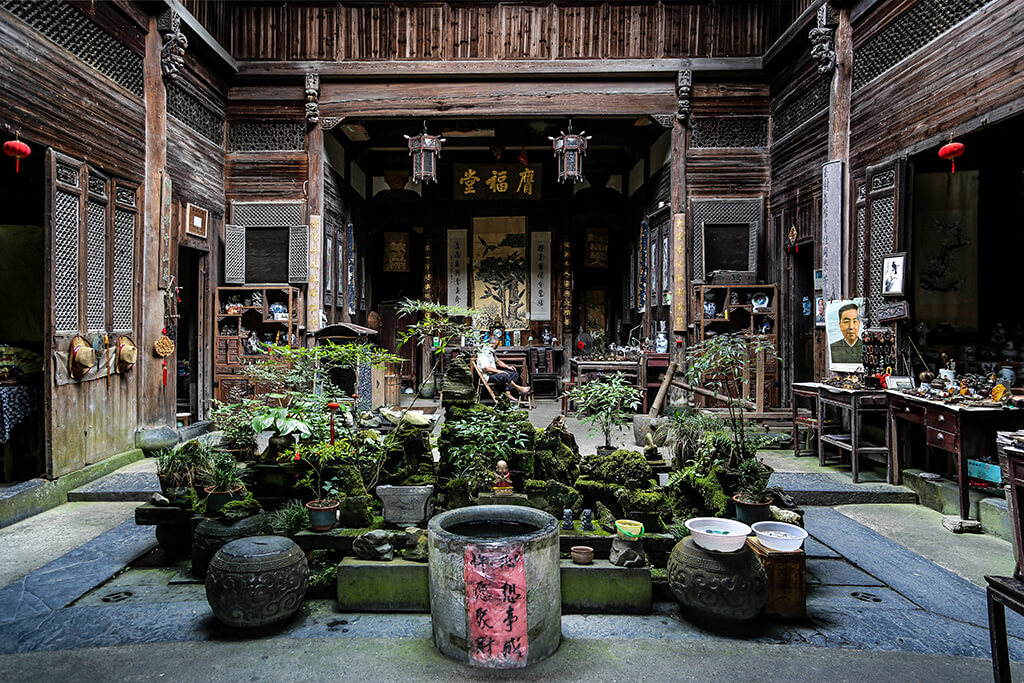
The art of carving has many variations in terms of techniques and the subjects they depict. Carvings adorn the interior of every type of building in these villages, so it is possible to admire the craftsmanship in private residences, ancestral halls, temples, public buildings, and archways.
There are three mediums of carving in Hui architecture: stone carving, brick carving and wood carving.
Stone carving can be admired mainly on arches, bridges, and in the foundations of houses, which were constructed with stone materials.

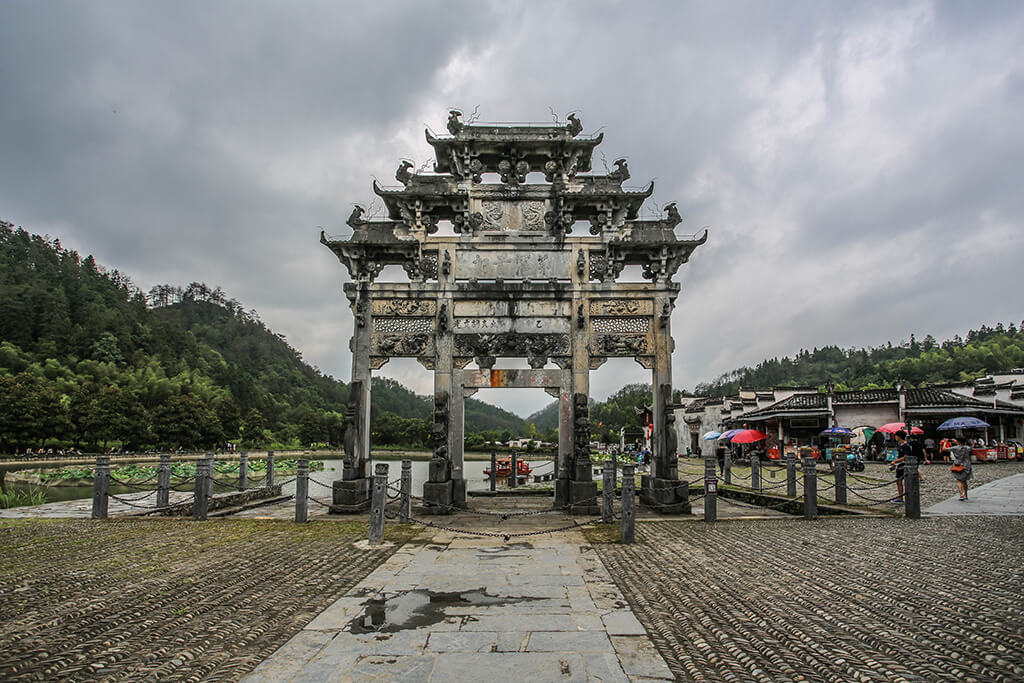
Brick carving can be admired in the gray bricks that adorn the entrance doors of buildings. The sculpted subjects fall into two categories: representations of natural elements such as flowers, plants or animals; and representations of real or legendary scenes depicting myths, legends, local customs, or scenes from everyday life.
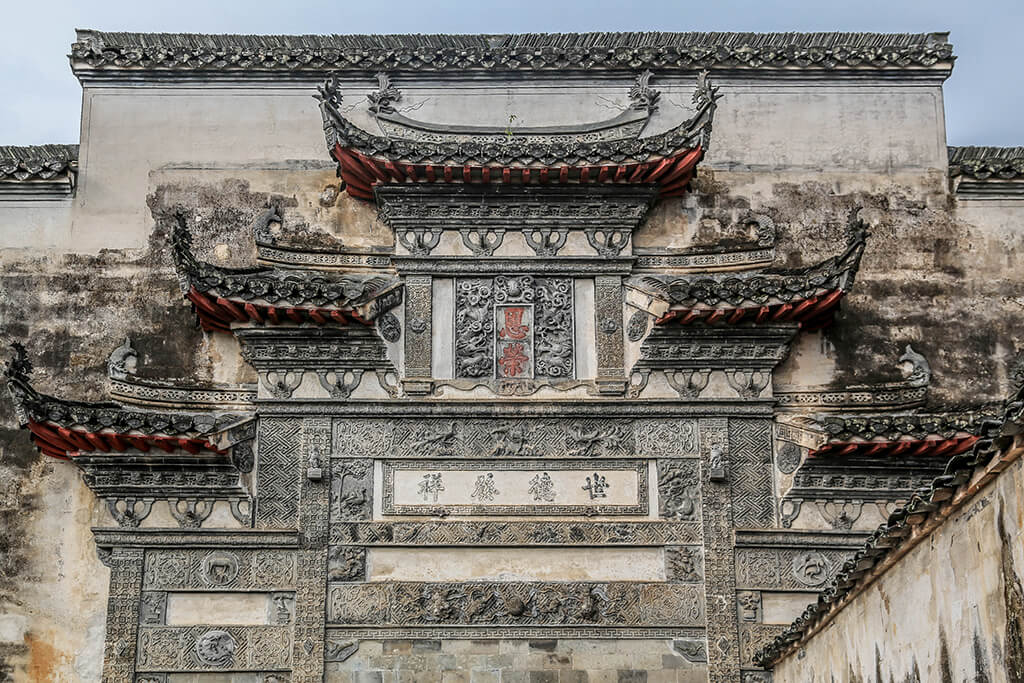
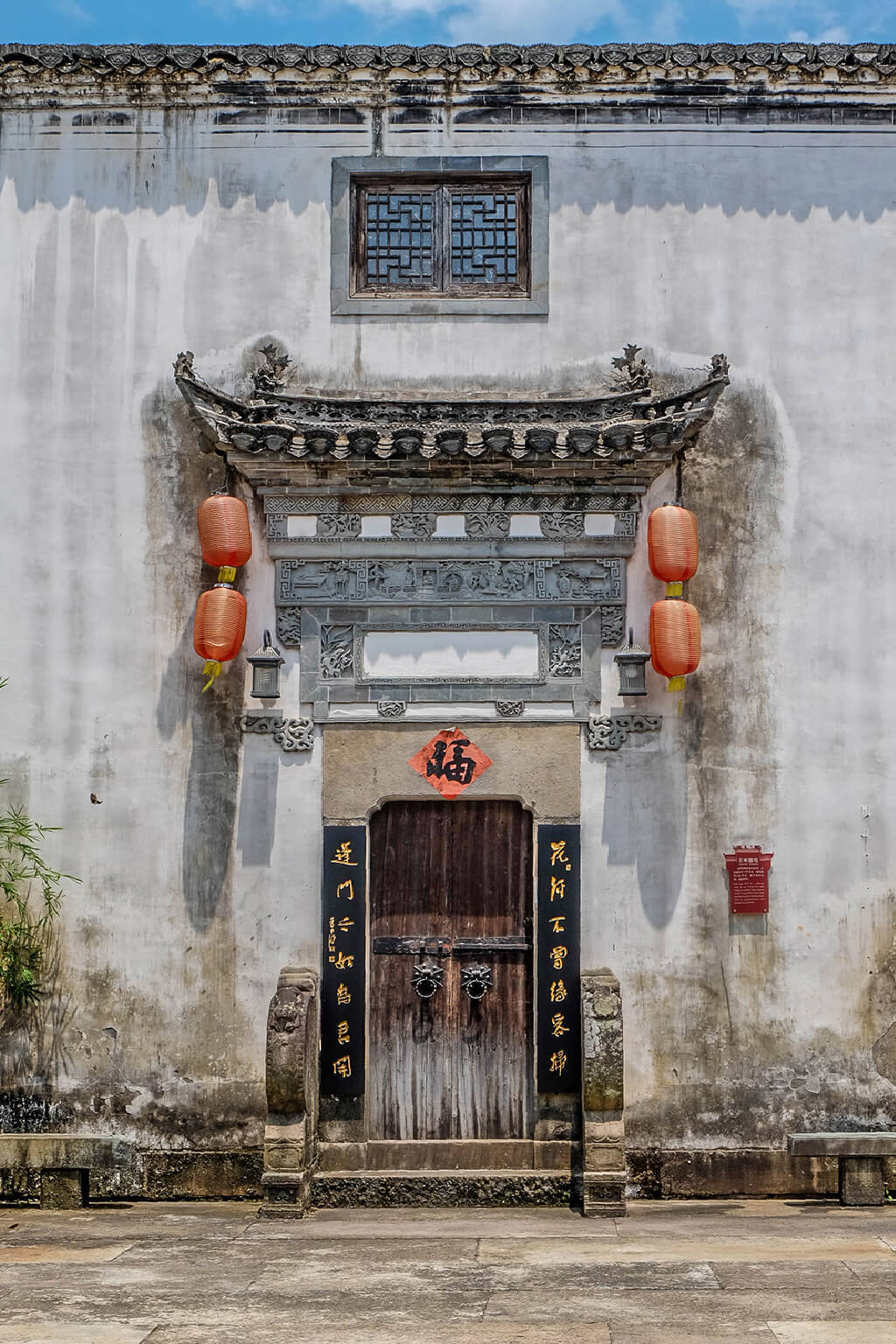
Wood carving can be admired in beams, pillars, capitals, doors, windows, panels, handrails, furniture and other structural elements of buildings.
The carved subjects can be natural elements or scenes that represent episodes of Chinese literature, opera, philosophy, myths, or legends depending on the building. In schools or temples it is common to present philosophical scenes or anecdotes with ethical teachings about justice, loyalty, moral integrity, or symbols of good omens (for example: bats as a symbol of good luck, turtle for longevity, peach for longevity and immortality, pomegranate for fertility etc.).
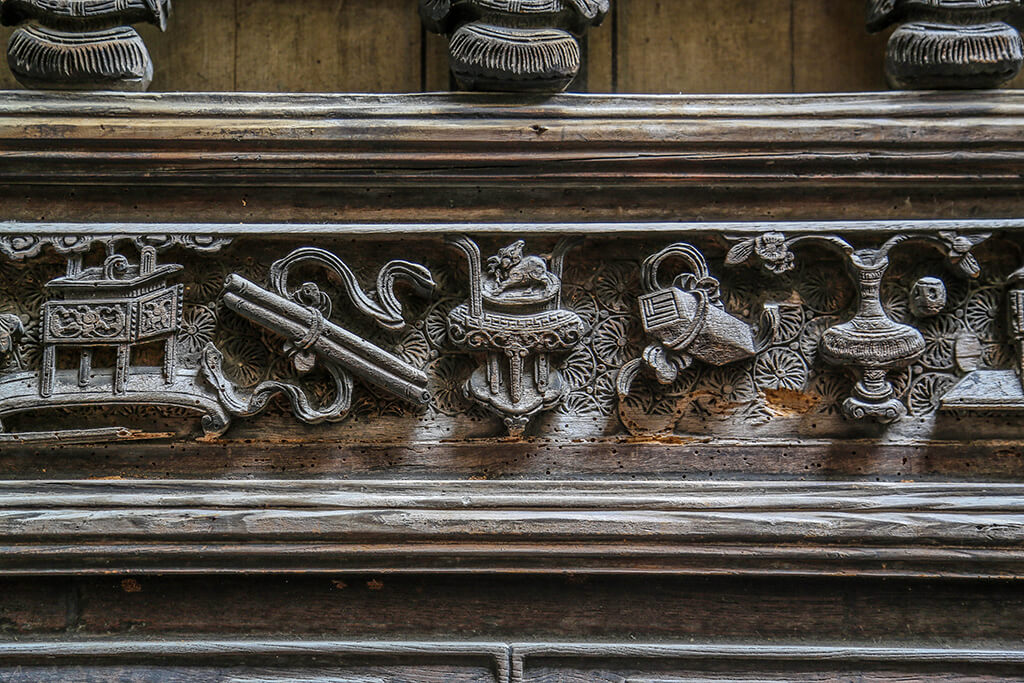
Over the centuries, the carving techniques of the master carpenters improved steadily, eventually achieving ridiculous levels of detail. The art form was mostly flat or in bas-relief during the Ming Dinasty, but it became increasingly three-dimensional during the Qing Dynasty with hints of perspective. The craftsman developed the ability to create dramatic light and shadow effects to emphasize the carved figures in the dim light of the interiors of the houses.
Hui architecture can be admired in the southern part of Anhui Province around the city of Huangshan (also called Tunxi), and in the northern part of Jianxi Province around the city of Wuyuan.
There are many villages in the Anhui region that deserve a visit. Among these, the most famous are Xidi and Hongcun (UNESCO World Heritage Sites sites since 2000). These two villages are extremely popular in China’s culture, welcoming hundreds of thousands of visitors each year. Don’t be intimidated! The stunning beauty of these ancient villages is absolutely worth the trip.
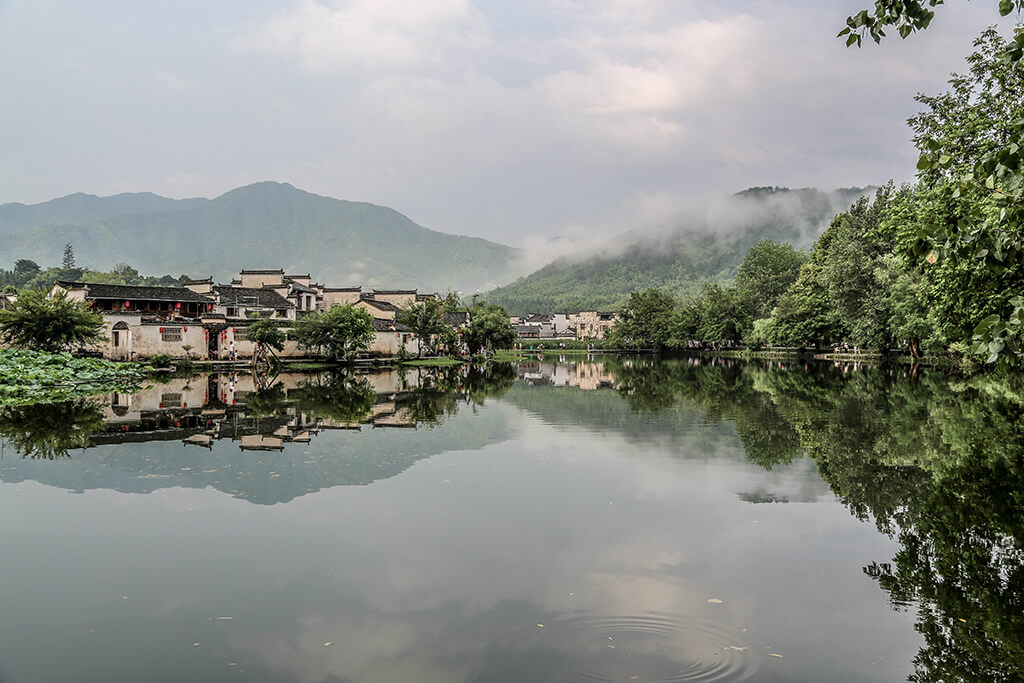
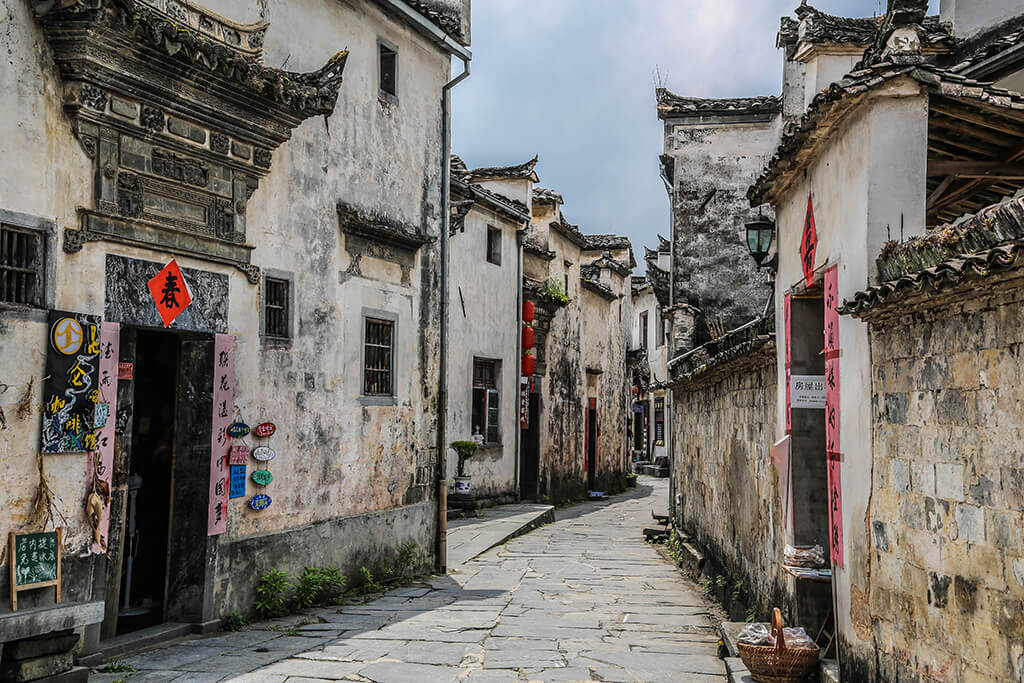
If you have a few days available in the area, the villages of Tangmo and Chengkan deserve a visit as well. Less famous than Xidi and Hongcun, but equally spectacular; these villages are not mobbed by mass tourism, and remain more untouched and authentic than their counterparts.
The villages are a few miles away from each other, meaning the visit may take a couple of days. The city of Tunxi (Huangshan) is one of the most practical places to stay in order to explore the surrounding countryside. It also offers easy access to the wonderful Yellow Mountains.
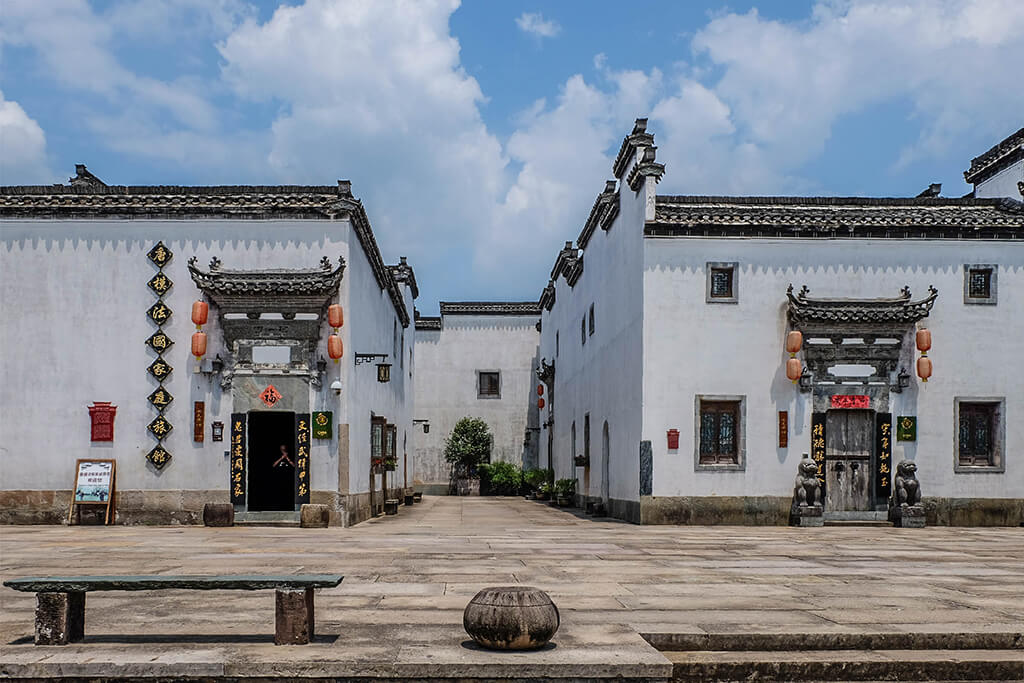
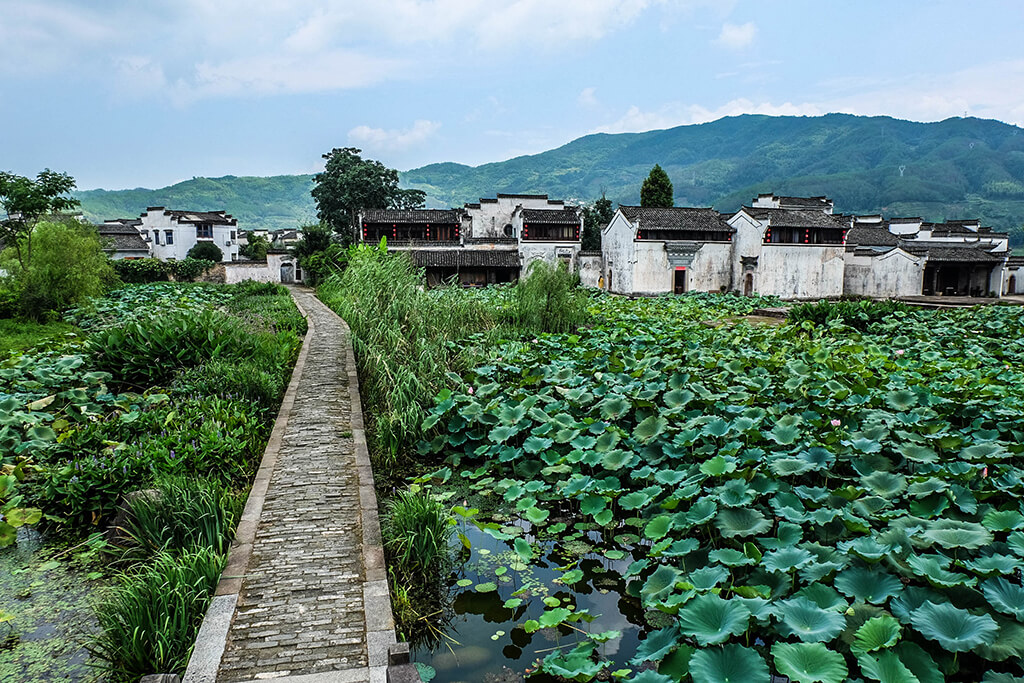
IF YOU FOUND THIS POST INTERESTING AND INSPIRING, HELP ME TO SHARE IT WITH OTHER TRAVELERS!
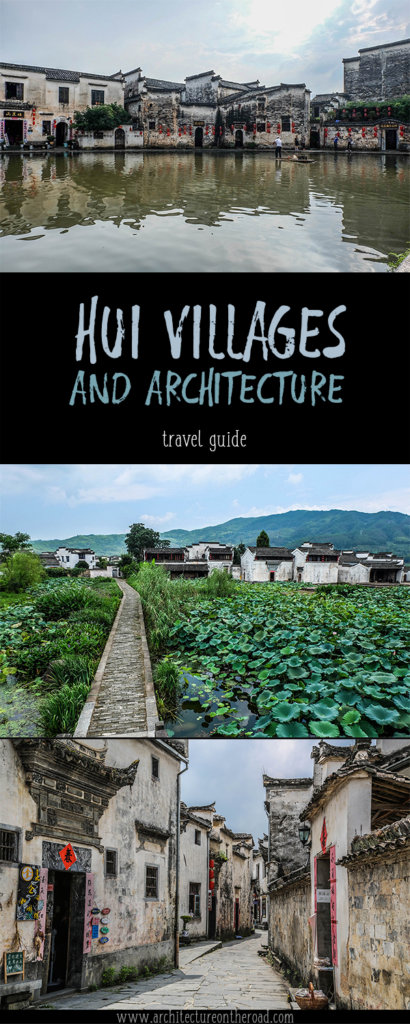
FRom the same province
stay tuned !
search for a destination
latest travel itineraries
latest CHINA articles
Text and pictures by
Architecture on the Road ©
Architecture on the Road
All rights reserved
All photographs on this site were taken and are owned by me (unless credited otherwise).
If you would like to use some of these photos for editorial or commercial purposes, many of these are available on Shutterstock (click the link below). Otherwise, please contact me on Instagram, Facebook, or by email.
Do not use my pictures without my written consent. Thank you!

